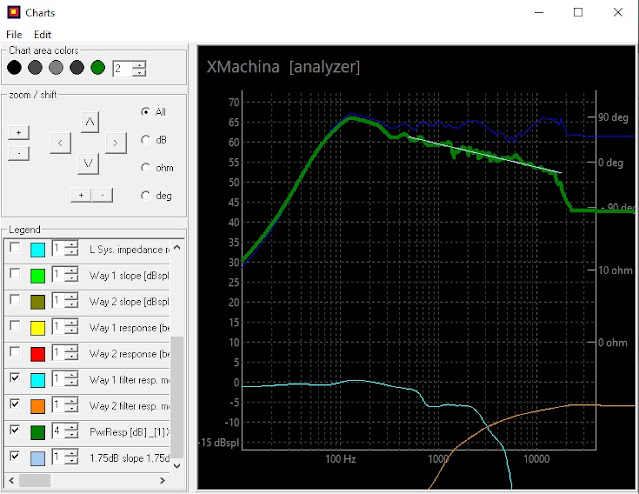New version of XMachina: 1211008
New version of XMachina: 1211008 LINK
New feature: Power Response target with off axis measurements.
It's assumed that some results will be transfered to VituixCad for further analysis and tweaking so the same convention of angle and XYZ position values was used.
As the pdf update date remains undefined, here is some information that may help to get started with the feature.
Create nodes for off axis measurements under way nodes.
Load off axis frds
The frds can be multi-selected in the open file dialog.
Enter angle identifier and angle multiplier.
The frds should now be loaded and displayed.
Note: ON-axis target frds should be loaded into FRD(main) nodes as in previous versions. You can use 0 deg measurements for this, but the delay value based on drivers XYZ and expected listening position should be entered.
Fill the "Power response target" settings in the task editor window. These parameters are gathered in a separate group box. The rest of the task editor window remains the same as before.
If the "sys SPL" weight value is 100% (the "resp. wgh." slider is in the leftmost position) then the power response calculations are switched off. To turn on the power resp target, move the slider to the appropriate position between "sys SPL" and "pwrResp".
The power response frequency range is defined independently of the system response range. Use the "power resp freqLow" and "power resp freqHigh" parameters.
The power response target can be only linear but there may be several target lines. They are defined by the "acceptable slopes" values. XMachina will try to choose the slope that allows to fulfill other targets the most.
Use "mirror H/V" options only if there is symmetry in appropriate plane. The "mirror H/V" option cuts orbit by half and multiplies the result by 2 (this speeds up off axis calculations ~2 times). If there is no symmetry but you want to reuse measurements for negative angles it's better to merge the frds with "-1" as the angle multiplier and use full orbit calculation.
Select angle step value for off-axis response calculation. It is advisable that the step coincides with the value used during the measurements. If not, the measurement data will be interpolated or extrapolated.















Komentarze
Prześlij komentarz